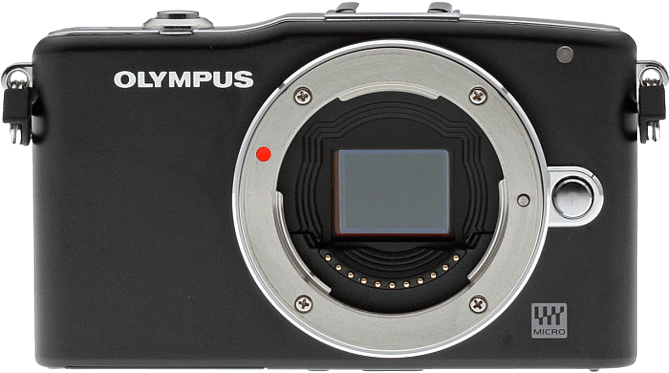Olympus PEN E-PM1 Specs and Scores

The Olympus PEN E-PM1 receives a score of 42/100. This mirrorless camera was announced on June 30, 2011, and released the same year. Priced at $499 during its launch, the E-PM1 measures 110 x 64 x 34mm and weighs 265g (0.58lbs).
Compared to today’s market, the E-PM1’s specifications are not as competitive. However, it is important to remember that this camera was released a decade ago, and advancements in technology have since improved camera features. That said, the Olympus PEN E-PM1 still has its own merits and can be suitable for certain photography needs.
Olympus PEN E-PM1 Overview and Optics
The Olympus PEN E-PM1 receives a score of 47/100 for its optics. This camera features a 12.3-megapixel CMOS sensor, with a Micro Four Thirds sensor size and a 4:3 aspect ratio. The E-PM1 is equipped with a TruePic VI processor, which allows for a shooting speed of 5.5 frames per second. Additionally, the camera’s DXOMARK score for the sensor is 52.
The E-PM1 has a Micro 4/3 lens mount and offers image stabilization. Compared to current market standards, the 12.3-megapixel sensor and 5.5 fps shooting speed fall short as newer models offer higher megapixels and faster shooting speeds. However, the Micro Four Thirds sensor size and image stabilization are still relevant and beneficial for various shooting situations.
While the Olympus PEN E-PM1’s optics may not be the most advanced on the market, they provide satisfactory performance for casual photographers and those looking for a compact camera with a decent sensor size and image stabilization.
Olympus PEN E-PM1 Video Performance
The Olympus PEN E-PM1 receives a video score of 56/100, which is a moderate rating. This camera offers Full HD video resolution with maximum dimensions of 1920 x 1080 pixels. The highest video frame rate achievable is 60fps, providing smooth motion capture. However, the camera lacks built-in time-lapse functionality, which is a disadvantage for those interested in creative videography.
When considering the current market, the E-PM1’s video capabilities are decent but not exceptional. Many contemporary cameras now offer 4K resolution and advanced features such as time-lapse, making the E-PM1’s offerings somewhat dated. Nevertheless, the camera still produces quality Full HD videos suitable for casual users and those not seeking advanced videography options.
The Olympus PEN E-PM1’s video capabilities are satisfactory for basic needs, but those seeking cutting-edge video features may wish to explore other options in the market.
Olympus PEN E-PM1 Features and Benefits
The Olympus PEN E-PM1’s features score is 36 out of 100, which may seem low, but let’s consider the specifics. The camera has a 3-inch screen with a resolution of 460,000 dots. This screen size and resolution is standard for many cameras, but it lacks some modern features found in today’s market. For instance, the E-PM1 does not have a touchscreen, flip screen, GPS, WIFI, or Bluetooth capabilities.
While these missing features may not be essential for some users, their absence does make the camera less competitive compared to newer models. The Olympus PEN E-PM1 is a decent choice for those who value simplicity and don’t require the latest technology. However, for users who seek a more advanced and connected camera, other options may be more suitable.
Olympus PEN E-PM1 Storage and Battery
The Olympus PEN E-PM1 receives a storage and battery score of 21/100. This camera has one memory card slot, accepting SD, SDHC, and SDXC cards. However, its battery life is relatively short, providing only 330 shots per charge. The camera uses a BLS-5 battery type, but it does not support USB charging.
When compared to current market offerings, the E-PM1’s storage and battery specifications fall short. Many contemporary cameras boast longer battery life, multiple memory card slots, and USB charging capabilities. Thus, the E-PM1’s storage and battery performance may not meet the expectations of today’s photographers.
